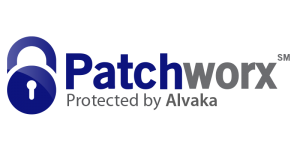The Hidden Costs of Ransomware Attacks on Enterprises
Hidden ransomware costs for businesses continue to emerge as a persistent challenge in the ever-evolving cyber threat landscape. As an organization, we have learned that the impact of ransomware extends far beyond the immediate expense of paying the ransom. Thorough IT management and proactive network services have become vital in not just mitigating these risks but in also managing the broader implications of such attacks. Acknowledging the significant hidden costs is the first step toward developing a comprehensive strategy that safeguards our assets and maintains operational resilience.
Deceptive in nature, the true impact of a ransomware incident is akin to an iceberg, where the immediate and direct costs represent only the visible tip. Beneath the surface lies a bulk of indirect expenses and operational disruptions that can often dwarf the initial ransom demand. For us, it’s imperative to explore these submerged and deceitful costs in order to arm ourselves with the right knowledge and strategies to prevent long-term financial strain on our business.
At Alvaka, we emphasize the significance of vigilance in IT management to avoid the sneakier ramifications of ransomware attacks. It’s not enough to simply prevent intrusions; we need to be aware of the wider impact these threats can have on our company’s finances and reputation. By shedding light on the hidden costs of ransomware, we can better prepare and protect our business from such disruptive events. A strong defense includes recognizing the secondary effects of an attack and creating redundant systems to minimize its broader financial implications.
The landscape of challenges imposed by ransomware requires us to be continually adaptive and well-informed. Our ability to stay ahead of potential threats is rooted in our commitment to comprehensive IT management services, which foster a secure and resilient network environment. In this introduction, we have sketched the outline of ransomware’s treacherous iceberg. As we move forward, our objective is not only to focus on keeping our valuable data out of the hands of cybercriminals but also to mitigate the varied tactics they employ to destabilize our business operations. Awareness and preparedness are our chief allies in this ongoing battle against the covert costs of ransomware.
The Ransomware Recovery Cost Calculator by Alvaka is a powerful tool designed to help organizations estimate the financial impact of recovering from a ransomware attack, enabling better preparedness and informed decision-making for cybersecurity investments.
The Hidden Ransomware Costs for Businesses: A Multifaceted Challenge
Operational Disruptions and Productivity Loss
We acknowledge that when ransomware strikes, the direct costs are just the beginning. The operational disruptions follow suit and can be devastating. Our systems grinding to a halt means a direct impact on productivity. Employees are left idle, manufacturing can stall, and customer service may become unavailable. These productivity losses often go undocumented, yet they weigh heavily on the financial stability of any business.
Deteriorating Customer Trust and Brand Damage
In the aftermath of an attack, the ripple effect on a company’s reputation can be profound. As we strive to build and maintain trust with our clients, a single ransomware incident could significantly set us back. Customers value security and reliability; a breach puts these at risk. Consequently, the hidden ransomware costs for businesses can extend far into diminishing brand equity and lost customer loyalty, which invariably takes time and investment to rebuild.
Regulatory Fines and Legal Ramifications
Ransomware not only poses a risk to our data but also to our compliance with industry regulations. Breaches may lead to substantial fines from regulatory bodies, particularly if sensitive client data is compromised. Adding to the complexity, the legal ramifications of a ransomware attack might involve drawn-out litigation, which carries additional expenses in legal fees and settlements. Thus, the importance of robust IT management and network services cannot be overstated in ensuring our compliance and protecting ourselves from these hidden costs.
Increased Insurance Premiums and Security Investments
Ransomware attacks have a habit of influencing future costs in more subtle ways. For instance, once a company has fallen victim, insurance premiums can skyrocket. Moreover, the necessity of investing in more sophisticated cybersecurity measures becomes unavoidable. Often, these investments aren’t just one-time costs; they require ongoing expenditure to ensure our defenses stay abreast of evolving ransomware tactics.
- Enhanced security software subscriptions
- Employee training programs for cybersecurity awareness
- Regular audits and updates to IT infrastructure
- Third-party cybersecurity assessments
- Advanced threat detection and response systems
Diminished Employee Morale and Talent Attrition
We recognize that the consequences of ransomware delve into the human aspect of our businesses too. An attack can lead to diminished morale among employees, who may feel vulnerable or frustrated by the interruption to their work. This emotional toll can contribute to talent attrition, as employees seek stability elsewhere. Consequently, the hidden ransomware costs for businesses may be seen in increased turnover rates, recruiting expenses, and training costs for new staff.
Long-Term Strategic Setbacks
Finally, ransomware attacks can force us to divert resources from strategic initiatives to crisis management, resulting in long-term setbacks. Vital projects may be delayed or shelved as we direct our focus and finances towards addressing the immediate and hidden impacts of the incident. This diversion can stunt our growth and innovation, affecting competitive advantage and market position.
Did you know that ransomware’s hidden costs can include long-term reputation damage, increased insurance premiums, and loss of intellectual property, beyond the initial ransom paid?
Steering Through the Aftermath: Road to Recovery
In the wake of a ransomware attack, we recognize that restoring operations is just the beginning. It is crucial to delve into the hidden ransomware costs for businesses to truly measure the impact. Our experience underscores the importance of a comprehensive recovery strategy that encompasses more than just decrypting data and resuming services. We understand that proper recovery extends to fortifying defenses, educating staff, and implementing resilient systems that withstand future threats.
Our Proactive Stance on Prevention and Recovery
At Alvaka, we’ve witnessed the resilience of businesses that embrace proactive measures. By offering robust ransomware recovery solutions, we place great emphasis on not only recovery but also on the prevention of future incidents. This encompasses a spectrum of services, from real-time monitoring to cutting-edge cybersecurity training. By prioritizing these initiatives, we strive to mitigate the hidden ransomware costs for businesses, ensuring our client’s fortitude against the ever-evolving threat landscape.
Unveiling the True Cost: A Comprehensive Financial Analysis
The concealed financial burden of ransomware extends far beyond the initial extortion demand. We delve deep into performance metrics, examining productivity losses, reputational damage, and the ripple effect on business relationships. Understanding these facets allows us to provide a holistic financial analysis, equipping our clients with the knowledge to fully comprehend and counteract the hidden ransomware costs for businesses. Our approach is not only to repair the damage but to empower businesses with the resilience to thrive amidst digital adversity.
Forging Ahead with Resilience and Assurance
We believe in transforming the ransomware attack narrative from one of disruption to one of empowerment. As we support businesses in navigating these challenging circumstances, our focus is steadfast on paving a path of recovery lined with robust security postures and resilient infrastructures. At Alvaka, we are dedicated to ensuring that every client emerges from ransomware attacks stronger and more secure, with the assurance that they are prepared to face and overcome future cyber threats.
Commitment to Continuous Improvement
Our commitment to our clients extends to the continuous improvement of our services and solutions. In the relentless battle against cyber threats, complacency has no place. Thus, we perpetually refine our methodologies and expand our expertise to stay ahead of attackers. By embedding resilience into the DNA of our operations, we ensure that our clients are equipped not only to understand their risks but also to move forward with the foresight and capabilities necessary to prevent and mitigate attacks.
Partnering for a More Secure Tomorrow
In conclusion, our pursuit at Alvaka is to foster a partnership that transcends the traditional client-service provider dynamic. We are collaborators in our clients’ journey towards a more secure tomorrow, with a key focus on unveiling and addressing the hidden toll of ransomware. Equipped with advanced IT management and network services, we endeavor to not only restore but also reinforce the digital sanctuaries of the businesses we serve. Together, we stand vigilant, ready to uncover and conquer the challenges and costs introduced by ransomware, visible and invisible alike.
FAQ
What immediate financial implications do ransomware attacks have on businesses? ▼
Ransomware attacks typically result in direct financial costs, such as paying the ransom to regain access to encrypted data. Additionally, organizations incur expenses for professional services to mitigate the attack, IT overtime costs, and potential regulatory fines. This immediate financial burden is often only the tip of the iceberg, representing the most visible impact on businesses.
Why is advanced IT management critical in mitigating ransomware risks? ▼
Advanced IT management is crucial because it employs proactive measures such as regular system updates, employee training, and advanced threat detection tools to protect against cyber threats. Through vigilant monitoring and responsive measures, it’s possible to reduce the risk of a successful ransomware attack and its associated costs.
What are some of the hidden costs of ransomware that businesses should be aware of? ▼
Beyond the initial ransom payment, businesses face hidden costs that include operational downtime, loss of customer trust, damage to brand reputation, data recovery expenses, and long-term IT infrastructure upgrades. These can be substantial and sometimes exceed the ransom payment itself, affecting the organization for months or even years after the incident.
How can uncovering hidden ransomware costs help businesses? ▼
By uncovering the hidden costs of ransomware, businesses can gain a comprehensive understanding of the financial burden stemming from these attacks. This knowledge aids in better risk management and allows for the allocation of appropriate resources towards preventative measures, ultimately leading to a more resilient and prepared organization.
Can paying the ransom guarantee the recovery of encrypted data? ▼
Paying the ransom does not guarantee the recovery of encrypted data. Moreover, meeting attackers’ demands can mark the organization as a target for future attacks. Implementing strong backup solutions and having an incident response plan might offer safer and more reliable alternatives for data recovery.
In what ways can ransomware impact customer trust and company reputation? ▼
Ransomware can significantly erode customer trust if their data is compromised. Also, the incident can harm the company’s reputation, signaling potential security weaknesses. Subsequently, this may discourage prospective customers and diminish the confidence of existing clients, leading to lost revenue over time.
How does operational downtime due to ransomware affect a business financially? ▼
Operational downtime halts business processes, stopping revenue streams and incurring costs associated with idle employees and disrupted supply chains. Additionally, when services are unavailable, customers may turn to competitors, causing long-term financial repercussions for the affected business.
What kind of regulatory fines can businesses face after a ransomware attack? ▼
Businesses may face regulatory fines if a ransomware attack results in the breach of sensitive information, especially if they are found to be non-compliant with data protection regulations such as HIPAA, GDPR, or other industry-specific laws. These fines can be substantial and add to the immediate costs of the attack.
Is it necessary for a company to upgrade its IT infrastructure after a ransomware attack? ▼
Often, it’s necessary for a company to upgrade its IT infrastructure following a ransomware attack. This is to patch vulnerabilities that were exploited and to strengthen defenses against future threats. While costly, such upgrades are essential for maintaining robust cybersecurity and preventing similar incidents.
How does ransomware affect long-term business growth and strategy? ▼
The impact of ransomware on long-term growth and strategy can be significant. Recovering from an attack may require diverting resources from strategic initiatives to crisis management and recovery efforts, slowing down progress and innovation. Additionally, the lasting effects such as damaged customer relationships and an impaired reputation can hinder growth opportunities.








 Smoke testing is a term used to describe the testing process for servers after patches are applied.
Smoke testing is a term used to describe the testing process for servers after patches are applied.  This is a basic cost calculator for you to compute your typical monthly cost for patching your servers, PCs, laptops, tablets and associated application software. It also forms the basis for you to begin calculating your Return on Investment for software patching, or for comparison with alternatives to the manual process of patching operating systems and application software—such as Patch Management as a Service, also known as Vulnerability Management as a Service.
This is a basic cost calculator for you to compute your typical monthly cost for patching your servers, PCs, laptops, tablets and associated application software. It also forms the basis for you to begin calculating your Return on Investment for software patching, or for comparison with alternatives to the manual process of patching operating systems and application software—such as Patch Management as a Service, also known as Vulnerability Management as a Service.